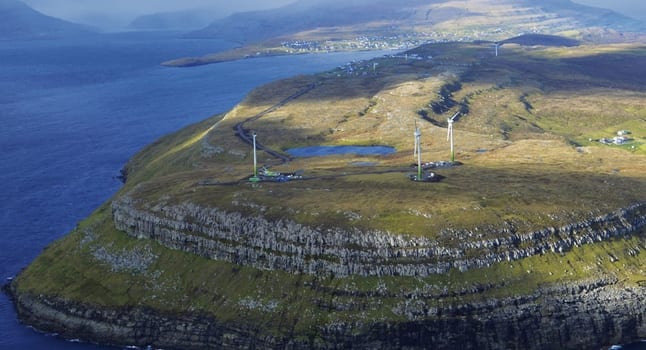
A group of islands located halfway between Norway and Iceland is set to host Europe’s first ever commercial deployment of a wind farm-connected battery storage system, as part of an effort to cut the archipelago’s dependence on oil, while meeting its growing energy needs with renewables.
A 2.3MW lithium-ion energy storage system (ESS) will be installed at Faroe Islands in a joint effort by industrial battery maker Saft and German wind turbine maker Enercon, together with the islands’ power producer and distributor, SEV.
The Húsahagi ESS, made up of two of Saft’s Intensium Max High Power containerised Li-ion battery systems, will operate in combination with the Island’s 12MW Húsahagi wind farm, installed last year as part of the Faroe Islands government’s commitment to reducing to increase its share of renewable generation from 38% in 2011 to 75% in 2020.
The Húsahagi wind farm – 13 Enercon turbines located just north of capital Tórshavn on the island of Streymoy – has increased the country’s wind share to 26 per cent of total electricity production. Hydropower is also used on the archipelago.
SEV hopes the system will help address the Islands’ grid stability issues, including ramp control to smooth out sharp increases and decreases in power, as well as providing frequency response and voltage control services.
“The environmental and economic futures of the Faroe Islands demand that we maximise the usage of all our available renewable energy resources. But it is equally vital that we maintain grid stability and reliability as the penetration of intermittent generation increases,” said SEV project manger Terji Nielsen.
In particular, the storage system will help to minimize “curtailment” – when wind generation is available but not injected into the grid – which, which would otherwise occur in periods of high wind and low consumption.
The Saft ESS is slated for commissioning in December this year.









